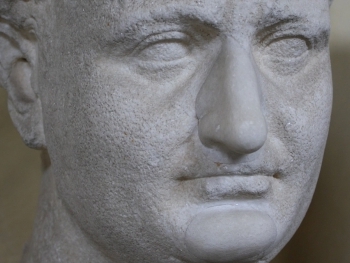In the annals of ancient Rome, few figures command as much admiration and reverence as Emperor Titus. Known for his military prowess, statesmanship, and benevolent rule, Titus left an indelible mark on the Roman Empire during his brief but impactful reign. From the majestic bust of Titus to his enduring legacy as a symbol of Roman greatness, the imagery associated with this celebrated emperor offers valuable insights into his life, achievements, and enduring influence.
Titus, whose full name was Titus Flavius Caesar Vespasianus Augustus, ascended to the imperial throne in 79 AD, following the tumultuous reign of his father, Emperor Vespasian. Despite his relatively short tenure as emperor, Titus wasted no time in making his mark on the empire. His reign is perhaps best remembered for his leadership during the eruption of Mount Vesuvius in 79 AD, which devastated the cities of Pompeii and Herculaneum. Titus's swift and decisive response to the disaster earned him the admiration of his subjects and solidified his reputation as a capable and compassionate ruler.
Central to the imagery associated with Titus is the bust of Titus, a striking representation of his likeness crafted by skilled artisans of ancient Rome. These intricately carved busts capture the essence of Titus's character, from the regal bearing of his figure to the steely determination in his gaze. Displayed in palaces, temples, and public spaces throughout the empire, these busts served as potent symbols of Titus's authority and leadership.
Beyond the physical representations of his likeness, Titus is also immortalized in the annals of history as a paragon of Roman virtue and excellence. As emperor, he distinguished himself as a capable military commander, leading successful campaigns against Rome's enemies and expanding the empire's borders. Under his rule, Rome experienced a period of relative peace and prosperity, known as the Pax Romana, which fostered economic growth, cultural flourishing, and social stability.
Yet, Titus's legacy extends far beyond his military conquests and political achievements. He was also known for his compassion and generosity towards his subjects, earning him the affectionate moniker "the beloved emperor" among the Roman people. Titus's efforts to alleviate poverty, provide relief to disaster victims, and promote civic amenities endeared him to his subjects and solidified his reputation as a ruler who placed the welfare of his people above all else.
The imagery associated with Titus, from the majestic bust of Titus to his enduring legacy as a symbol of Roman greatness, offers a window into the life and times of one of ancient Rome's most celebrated emperors. Through these representations, we gain a deeper appreciation for Titus's leadership, achievements, and enduring influence on the course of Roman history. As a paragon of virtue and excellence, Titus continues to inspire admiration and reverence centuries after his death, reminding us of the enduring power of leadership and statesmanship in shaping the destiny of nations.




